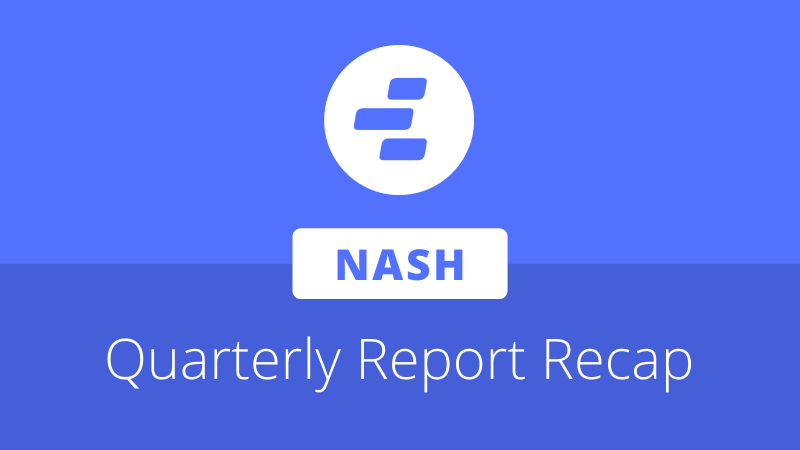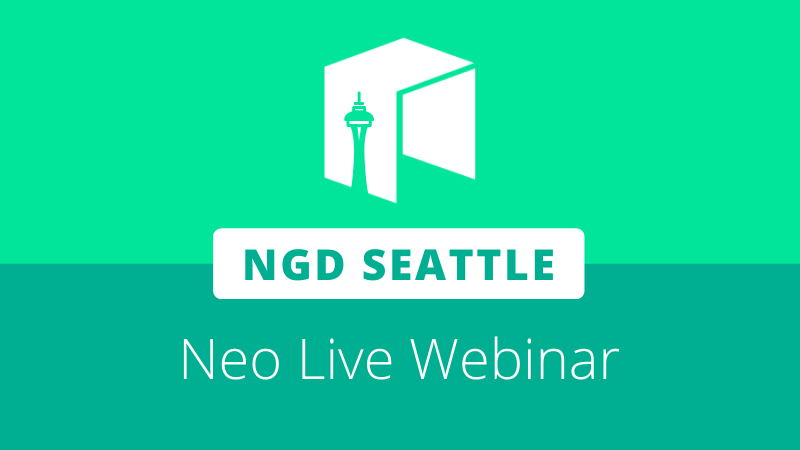
On April 24th, Nash conducted its quarterly report for Q1 2020 via a video call. The event was attended by co-founders Fabio Canesin, Ethan Fast, Thomas Saunders, Fabian Wahle, and Luciano Engel, who each gave a presentation on various facets of the company. During the event, the Nash team highlighted progress across applied research, security and DevOps, payments and mobile, design and UX, and marketing and communication.
Bitcoin trading
After launching non-custodial Bitcoin trading to Tier 2 users earlier in the week, Saunders announced the opening of Bitcoin trading to all users of the Nash platform. Further, Nash had reported that market maker and liquidity providers have been running their bots on BTC/USDC markets and ETH/BTC market smoothly. Saunders reflected:
“A lot of work has gone in to get to this point, and it’s taken a long time because we did not take a lot of the easy solutions we could have taken. One of the first things we looked into when we wanted to do non-custodial Bitcoin trading was kind of a wrapped Bitcoin that’s traded on an ETH chain or a NEO chain. Due to true custody issues, we decided that wasn’t the way. And then atomic swaps also have an issue with [being] incompatible with the kind of centralized exchange experience that we want to provide our users. So we ended up building a state channel-like protocol for trading Bitcoin, and we believe it’s a pretty awesome solution to deliver to our users.”
Given the complexity of the state channels for Bitcoin and Nash’s desire to ensure the safety of user funds, users are currently limited to deposits of up to one BTC. Saunders said, “once we’ve monitored the system, we’ll be able to remove those restrictions and have unrestricted Bitcoin trading in a decentralized way for everyone.”
Mobile app and fiat ramp
Wahle offered a brief update on the mobile application, fiat ramps, and Nash Pay.
On Friday, April 24th, Nash updated its mobile application to implement new navigation features, improve performance, and allow users to move funds between their trading account and personal wallet. Many of the changes were noted to be in preparation for future updates and more advanced functionalities.
One of these functions is the Nash fiat ramp, which will first serve European users through single euro payments area (SEPA) transfers with a “one-day turnaround for 95% of the cases,” according to Wahle.
Fiat ramps are tentatively expected to begin in May 2020 and will be available for both mobile and web platforms. Currently, the team is anticipating 0% fees in fiat ramps, though that rate depends on the exchange’s liquidity. Credit card payments will not be initially available due to the high fees associated with cryptocurrency purchases.
According to Wahle, the launch of Nash Pay is “right around the corner” and shares the same legal hurdles as the fiat ramps. Due to some confusion as to what Nash Pay entails, Wahle outlined its function and why it is attractive to merchants.
In short, Nash Pay will allow businesses to accept payments in cryptocurrency, yet have the funds settled in fiat:
“[Businesses] can use their fiat systems [and] accounting systems, as we pay our merchants in fiat currencies. So the journey goes that users buy something with cryptocurrencies in their shops, and then Nash takes care of all the conversion and sends the requested amount in fiat to the partners. This has, for them, several advantages. The accounting systems I mentioned, but also there is zero risk for them in terms of crypto volatility, and all the partners we talked to, at this point, are really not willing to take this risk. Some of them expressed that they would like to accept stablecoins and hold them to stay in the crypto ecosystem, but most of them prefer fiat conversion. Another plus is that we will charge zero fees, so it’s up to the vendor if they want to add a premium, but of course, we will not have any partners that charge crazy amounts. We will really try to limit these fees.”
The next short-term goal for the team is to integrate the mobile app with Nash Pay, fiat ramps, trading, and staking. Given the recent growth in the size of the team, Wahle said, “we’re very confident we can ship this in Q2.” Nash also intends to implement the ability for users to create new accounts on the mobile app.
Community engagement and customer service
During the marketing and communication presentation, Canesin highlighted Nash’s recently launched Ambassador program, which selected 12 community members to assist Nash in various aspects of outreach. Nash Ambassadors will be responsible for promoting Nash on various media, getting involved in local meetups, and translating marketing materials, among other methods of support.
Canesin explained:
“The new Ambassadors are present in more than just the Nash Community, and that’s the whole idea. We know how big [networks] outside of the Nash Community are. There are strong networks in several different [regions and languages], so you can have WeChat, QQ, Telegram, Discord, WhatsApp, TikTok, Instagram, there are so many networks and it’s obvious Nash cannot be present everywhere… [An] Ambassador is someone that can promote Nash on alternate channels and ping us for information. It’s someone that can facilitate contact with institutions, it’s someone that would be empowered and supported by Nash to run local crypto meetups, also engaging with the broader crypto community. Sometimes communities are more closed than others, and so we need to do some work to help these people, to help more community get there.”
Regarding customer service, Canesin stated, “on the support side, we have always strived to be very fast with our resolutions.”
This past quarter, Nash reported a 98% chat satisfaction rate and a 95% overall satisfaction rate for support queries. Nash notes that its figures are “among the best in the industry.” Additionally, the team claimed a chat response time of 22 seconds, and that 68% of the support tickets were solved with one-touch solutions.
The quarterly report also included presentations from Fast on applied research, Engel on security and DevOps, and concluded with an hour-long AMA comprised of questions collected from the Nash community.
The full quarterly report event can be found at the link below:
https://youtu.be/XPGL1hNwqs4







About The Author: Dylan Grabowski
Dylan is a reformed urban planner with a passion for covering the Neo ecosystem. His objective as a writer for Neo News Today is to report news in an objective, fact-based, non-sensational manner. When not behind a computer screen, he can be found in the mountains rock climbing. Find Dylan on Twitter (@GrabowskiDylan).
More posts by Dylan Grabowski